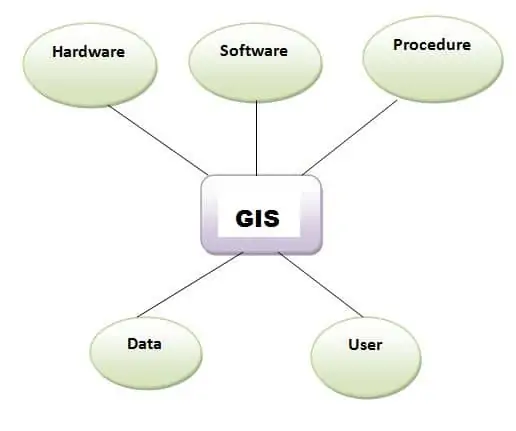Components of GIS
GIS Components are the primary function to perform Geo-spatial analysis. A Geographic information integrates hardware, software, data capturing, managing, analyzing, and displaying all forms of geographically referenced information.
The main 5 key components of Geographic Information Systems (GIS) are:
- Hardware
- Software
- Data
- User
- Procedure
All these five components organized to automate, manage, and deliver information through geographic presentation.

Table of Contents
Hardware
Hardware is the computer system on which a operate GIS software. They attached it to a disk drive storage unit, used for storing data and runs a program.
The Main Hardware components are:
Software
GIS software is a major function of research, analysis, and display geographic information. GIS Tools help to query, edit, run and display GIS data. Some GIS softwares are;
The Software components are:
- GIS Tools
- DBMS (Database Management System)
- GUI (Graphical User Interface)
- Query Tools
- Layout
Data
The most important component of GIS is the Data. A GIS will integrate spatial data with other data resources and can even use a DBMS. GIS data is a combination of spatial and tabular data or Attribute Data. Spatial can be Vector and Raster.
User
People are user of Geographic Information System, they can be handle all the tasks in GIS software. Users can maintain to design and technical specification. It has limited value without the people who manage the system and develop plans for applying it to real-world problems. GIS user is called GIS Analyst or Engineer.

Procedure
Procedure is more related to the management aspect of GIS. It’s referred to lines of reporting, control points, and other mechanism for ensuring the high quality of GIS. A successful GIS operates, which are the models and operating practices unique, well-designed and business rules to each organization. The procedures used to input, analyze, and query data determine the quality and validity of the final product.
